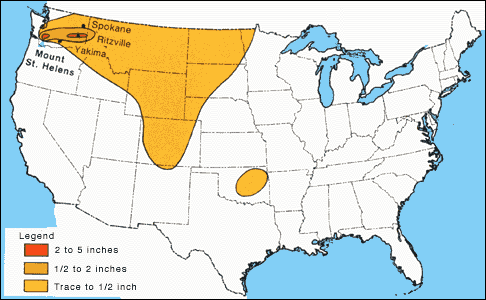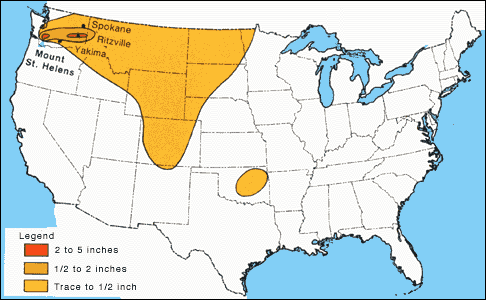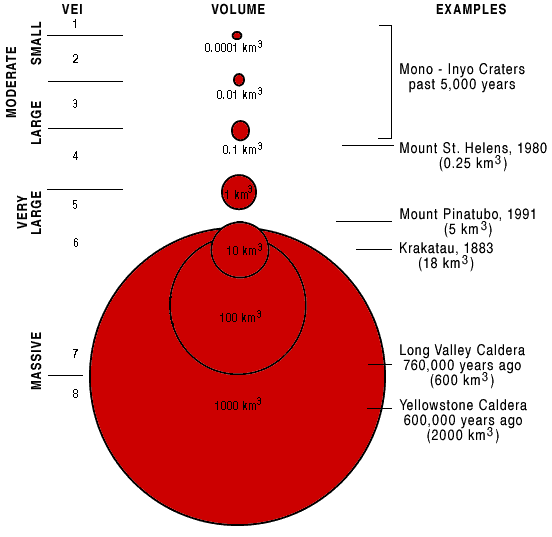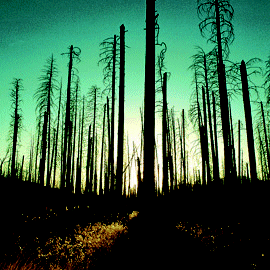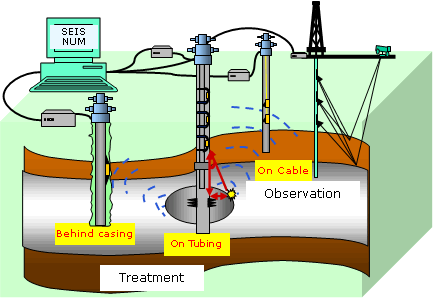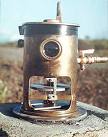Test 2 (Volcano Activities 4,5&7)

This is an open-book, open-note test covering Activities 4,5, & 7. You may only take this test once! Once completed, please record your score on your homework p. 56 #1-4. You have until midnight 3/14 Sunday to complete it.
- 1.
When a volcano erupts, particles other than lava are released in the atmosphere . The collective term is called tephra. What is the name for the LARGEST tephra? (HINT: p.34)
- A.
Asteriod
- B.
Volcanic bomb
- C.
Lapili
- D.
Ash
Correct Answer
B. Volcanic bombExplanation
When a volcano erupts, it releases various particles into the atmosphere, collectively known as tephra. Tephra includes different sizes of particles such as ash, lapilli, and volcanic bombs. The largest tephra is called a volcanic bomb. It is a large fragment of molten or semi-molten rock that is ejected from a volcano during an explosive eruption. These volcanic bombs are typically larger than 64 mm in diameter and can travel long distances before landing.Rate this question:
-
- 2.
What is the name for the smallest tephra? Often times, if it gets stuck in helicopter's or car's motor, it will cause vehicles to fail. Also, it travels the farthest from the eruption site. (HINT: 34)
- A.
Smoke
- B.
Volcanic bomb
- C.
Lapilli
- D.
Ash
Correct Answer
D. AshExplanation
Ash is the correct answer because it is the smallest tephra produced during volcanic eruptions. When ash particles are airborne, they can travel long distances from the eruption site and can cause mechanical failures in vehicles, such as helicopters or cars, if they get stuck in the motor.Rate this question:
-
- 3.
When soaked by rain, loose ash can form ________, or volcanic mudslides. (HINT: p.34)
- A.
Pyroclastic flows
- B.
Lahars
- C.
Volcanic bombs
Correct Answer
B. LaharsExplanation
When loose ash from a volcano is soaked by rain, it can form lahars, which are volcanic mudslides. This occurs when the ash mixes with water, creating a dense slurry that can flow rapidly down the slopes of the volcano. Lahars are highly destructive and can cause significant damage to the surrounding areas, including burying buildings and infrastructure under layers of mud and debris. Therefore, lahars are the correct answer to the question.Rate this question:
-
- 4.
Analyze the ash distribution of the Mt. St. Helens eruption. Which direction did the ash go?
- A.
North
- B.
East
- C.
South
- D.
West
- E.
Both B & C
Correct Answer
E. Both B & CExplanation
The correct answer is Both B & C. The ash distribution of the Mt. St. Helens eruption went both east and south. This means that the ash spread in two directions from the volcano, covering areas to the east and south of the eruption site.Rate this question:
-
- 5.
True or False: A lot of ash blew into Canada after the Mt. St. Helen's eruption.
- A.
True
- B.
False
Correct Answer
B. FalseExplanation
The statement is false because the majority of the ash from the Mt. St. Helen's eruption blew towards the east, affecting areas in the United States such as Washington, Idaho, and Montana. While some ash did reach Canada, it was not a significant amount compared to the impact on the US.Rate this question:
-
- 6.
VEI stands for Volcanic Explosivity Index. This scale measures the volume of lava & tephra & the height it reached post eruption. Thus, the higher the VEI number, the more erupted material & the higher it went. True or False: High VEI automatically means more deaths occured due to the eruption(HINT: 36)
- A.
True
- B.
False
Correct Answer
B. FalseExplanation
False. While a higher VEI indicates a larger and more explosive eruption, it does not necessarily mean that more deaths occurred. The number of deaths depends on various factors such as the proximity of human settlements to the volcano, the preparedness and response of the affected communities, and the effectiveness of evacuation measures. Therefore, it is possible to have a high VEI eruption with relatively few deaths, or a low VEI eruption with significant loss of life.Rate this question:
-
- 7.
The following gases are emitted from a volcanic eruption EXCEPT for: (HINT:40)
- A.
Water vapor
- B.
Sulfur
- C.
Flourine
- D.
Hydrogen chloride
- E.
Nitrogen
Correct Answer
C. FlourineExplanation
Volcanic eruptions release various gases and compounds into the atmosphere, such as water vapor, sulfur, hydrogen chloride, and nitrogen. However, fluorine is not typically emitted during volcanic eruptions. Fluorine is a highly reactive element that is not commonly found in volcanic emissions. Therefore, the correct answer is fluorine.Rate this question:
-
- 8.
Acid rain is rain that contains sulfuric acid. Acid rain damages plants on land and water (See picture). Emitted from a volcanic eruption & powerplants, sulfur combines with oxygen and __________ to create acid rain. (HINT:p.40)
- A.
Hydrochloric acid
- B.
Nitrogen
- C.
Water vapor
- D.
Carbon dioxide
Correct Answer
C. Water vaporExplanation
When sulfur combines with oxygen and water vapor, it creates acid rain. Acid rain is formed when sulfur dioxide (SO2) and nitrogen oxides (NOx) are released into the atmosphere from sources such as volcanic eruptions and power plants. These pollutants react with water vapor in the air to form sulfuric acid (H2SO4) and nitric acid (HNO3), which then fall to the ground as acid rain. Therefore, the correct answer is water vapor.Rate this question:
-
- 9.
How do volcanic eruptions impact climate? (HINT: p.40-41)
- A.
Volcanic products (carbon dioxide, greenhouse gas) can warm the atmosphere and speed up global warming
- B.
Volcanic products (dust, ash) can block the sunlight and reduce global temperatures
- C.
Volcanic products (sulfur, water vapor) can generate more rain containing sulfuric acid
- D.
Volcanic products (carbon dioxide) can acculumate near eruption sites and cause animals & people to suffocate
- E.
All of the above
Correct Answer
E. All of the aboveExplanation
Volcanic eruptions impact climate in multiple ways. Volcanic products such as carbon dioxide, a greenhouse gas, can contribute to warming the atmosphere and accelerating global warming. Additionally, volcanic products like dust and ash can block sunlight, leading to a reduction in global temperatures. Sulfur and water vapor released during eruptions can generate rain containing sulfuric acid, which can have various effects on the environment. Lastly, volcanic products, specifically carbon dioxide, can accumulate near eruption sites and pose a suffocation risk to animals and people. Therefore, all of the given options correctly describe the impacts of volcanic eruptions on climate.Rate this question:
-
- 10.
True or False: All volcanoes are monitored with seismographic equipment in order to detect signs of impending eruption. (HINT: 54)
- A.
True
- B.
False
Correct Answer
B. FalseExplanation
Not all volcanoes are monitored with seismographic equipment to detect signs of impending eruption. While seismographic equipment is commonly used to monitor volcanic activity, it is not universally available or used for all volcanoes. Monitoring methods can vary depending on the location and resources available, and may include other techniques such as gas monitoring, thermal imaging, and ground deformation measurements. Therefore, it is not true to say that all volcanoes are monitored with seismographic equipment.Rate this question:
-
- 11.
True or False: Monitoring a volcano can prevent an eruption.
- A.
True
- B.
False
Correct Answer
B. FalseExplanation
Monitoring a volcano cannot prevent an eruption. While monitoring can provide valuable information about the volcano's activity and potential signs of an impending eruption, it does not have the power to stop or prevent the eruption itself. Eruptions are natural processes driven by the buildup of pressure and other geological factors, and monitoring can only help in predicting and preparing for them, not preventing them.Rate this question:
-
- 12.
What physical clues predict that the volcano is preparing to eventually erupt?
- A.
The volcano would swell, or inflate or bulge
- B.
The slope (or incline) of the volcano would steepen or increase
- C.
Nothing
- D.
Both A & B
Correct Answer
D. Both A & BExplanation
Both A and B are physical clues that can predict that a volcano is preparing to erupt. When a volcano is about to erupt, it may swell, inflate, or bulge due to the accumulation of magma beneath the surface. Additionally, the slope or incline of the volcano may steepen or increase as the pressure from the magma builds up. These changes in the volcano's shape and structure are indicators that an eruption is imminent.Rate this question:
-
- 13.
What technological device can monitor the slope (or incline) of a volcano? (HINT: 56)
- A.
Tiltmeter
- B.
United States Geological Survey (USGS)
- C.
Hawaiian Volcano Observatory (HVO)
Correct Answer
A. TiltmeterExplanation
A tiltmeter is a technological device that can monitor the slope or incline of a volcano. It is used by organizations such as the United States Geological Survey (USGS) and the Hawaiian Volcano Observatory (HVO) to measure changes in the tilt of the volcano's surface. This information helps scientists monitor volcanic activity and predict eruptions.Rate this question:
-
- 14.
True or False: Physical clues (tilt of the volcano, swelling, earthquake measurements) can definitely predict a volcanic eruption. (HINT:p.56)
- A.
True
- B.
False
Correct Answer
B. FalseExplanation
The hint on page 56 suggests that physical clues alone cannot definitively predict a volcanic eruption. While physical clues such as the tilt of the volcano, swelling, and earthquake measurements can provide valuable information about volcanic activity, they are not always accurate indicators of an imminent eruption. Other factors such as gas emissions and changes in volcanic activity patterns also need to be considered for a more reliable prediction. Therefore, the statement that physical clues can definitely predict a volcanic eruption is false.Rate this question:
-
- 15.
True or False: In addition to the physical clues (bulge of land, tilt, earthquake measurements), long term study of the volcano behavior and past eruptions can help lead to a possible prediction of a volcanic eruption (HINT:56)
- A.
True
- B.
False
Correct Answer
A. TrueExplanation
Long term study of a volcano's behavior and past eruptions can provide valuable information about its patterns and tendencies. By analyzing historical data and monitoring changes in the volcano's activity, scientists can identify potential indicators of an impending eruption. Physical clues such as bulges of land, tilts, and earthquake measurements can also contribute to predicting volcanic eruptions. Therefore, the statement that long term study and analysis of a volcano's behavior can lead to a possible prediction of a volcanic eruption is true.Rate this question:
-
Quiz Review Timeline +
Our quizzes are rigorously reviewed, monitored and continuously updated by our expert board to maintain accuracy, relevance, and timeliness.
-
Current Version
-
Aug 26, 2023Quiz Edited by
ProProfs Editorial Team -
Mar 02, 2010Quiz Created by
Ms.garcia
 Back to top
Back to top






